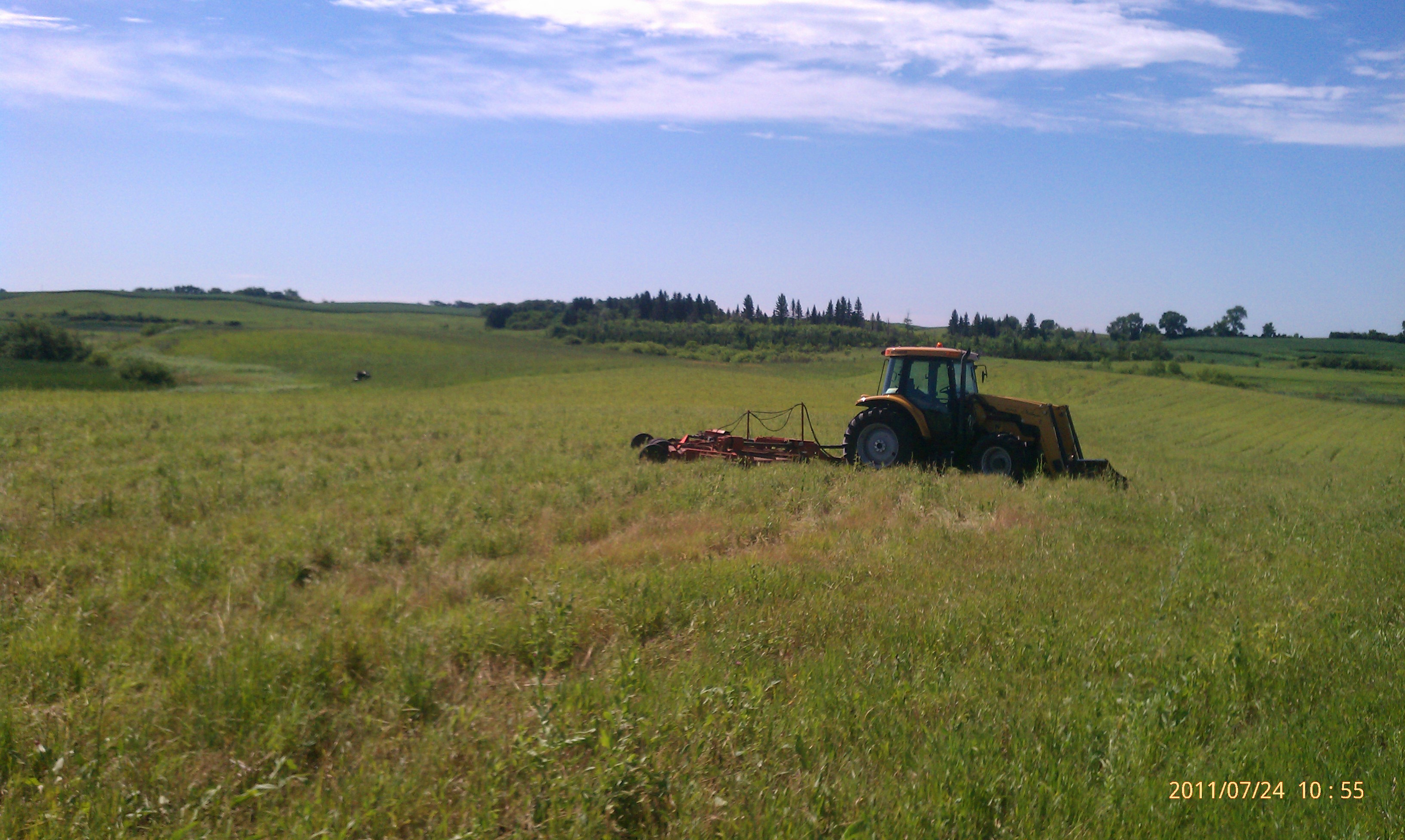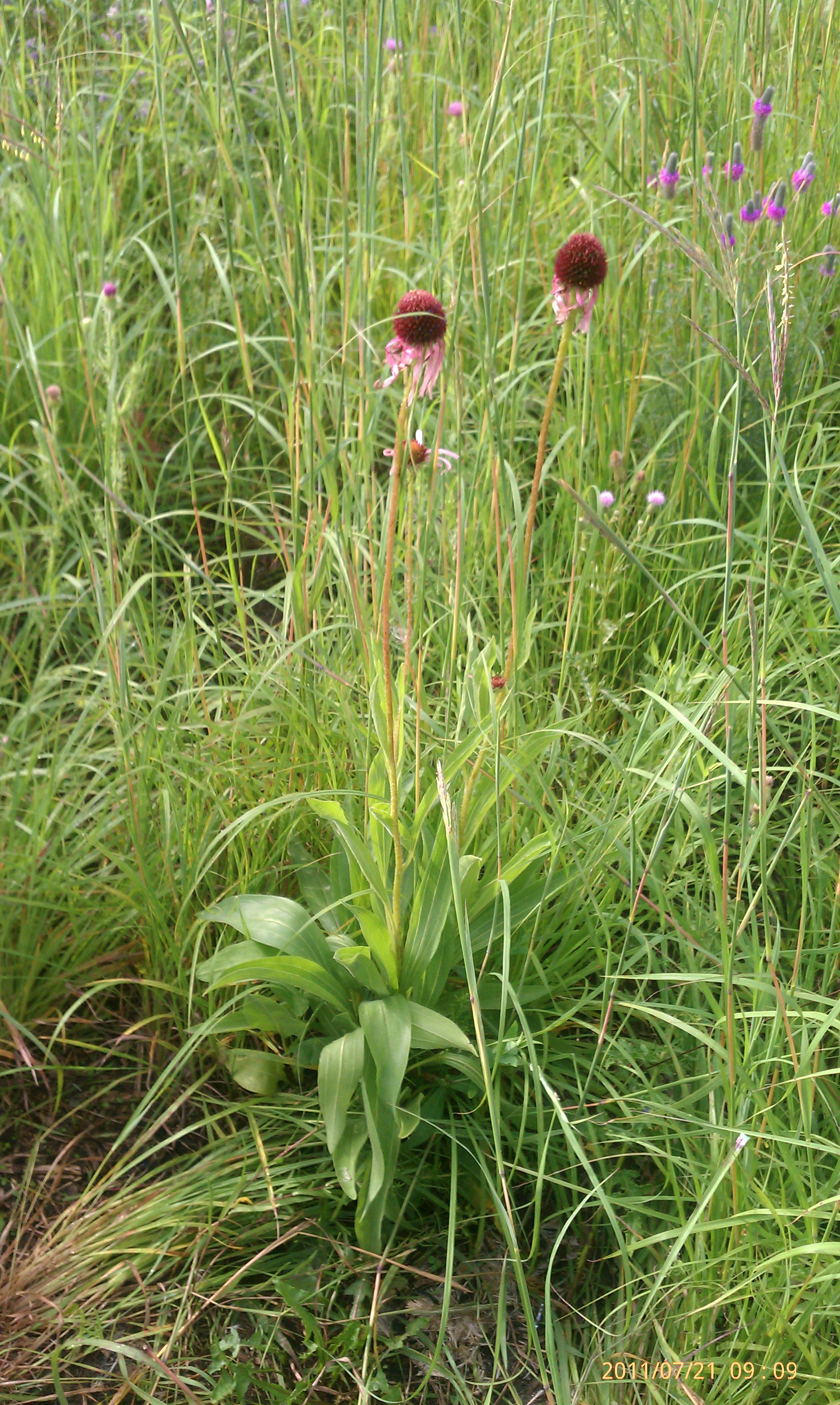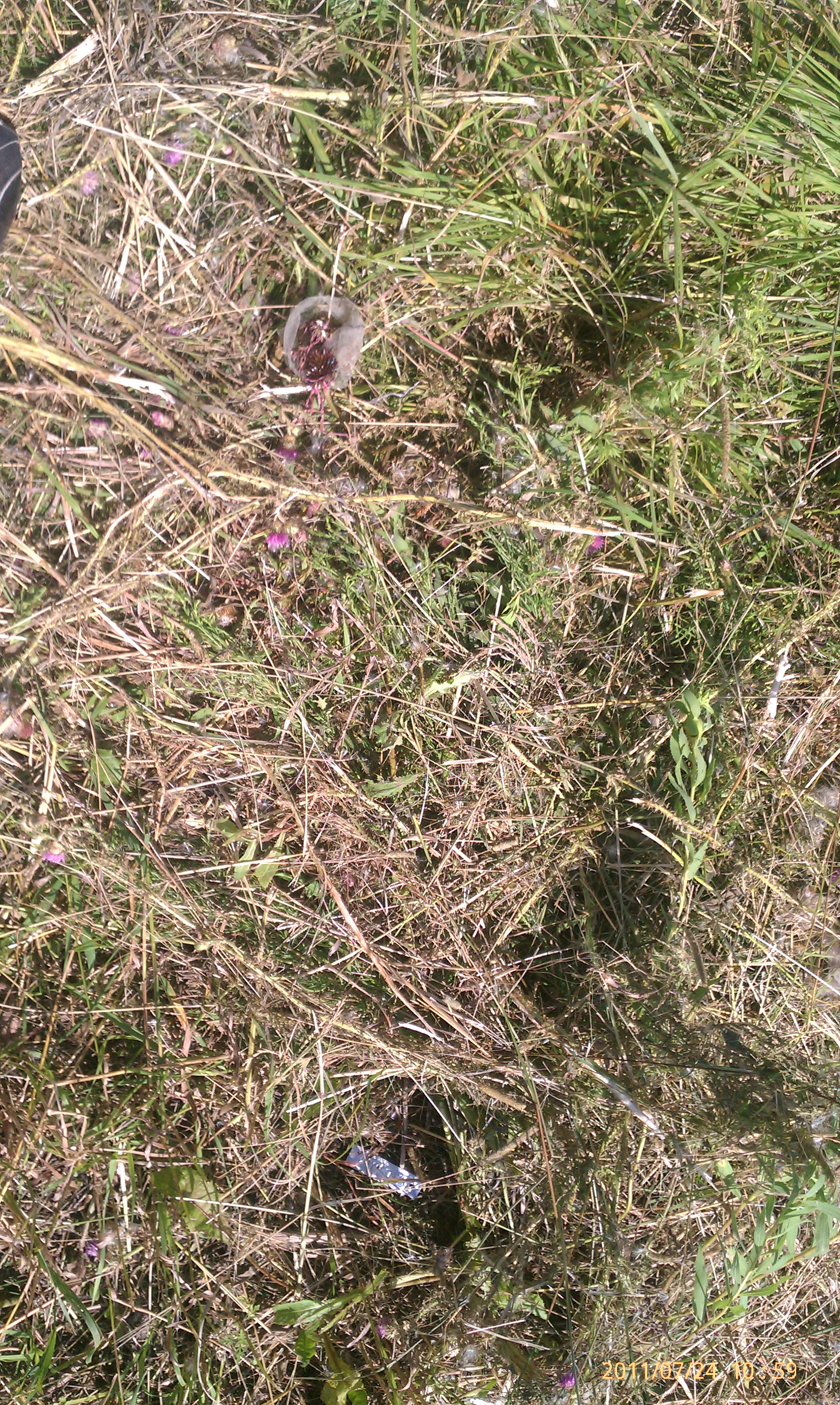|
|
Now that we’ve inventoried all the CG1 heads, I checked to see just how many we have. There were about 3009 twist-ties put out, and 119 heads were duds or missing, so our (estimated) total number of good heads is about 2890.
CG2 had something like 140 heads, but we haven’t inventoried those yet.
Flowering of Echinacea angustifolia in almost all prairie remnants was down this year. Overall, approximately half as many plants flowered this year as last. Two areas distinctly bucked the trend: flowering was high at Hegg Lake WMA, which was burned this spring, and at our main experimental plot, which was burned this spring. Burning really encourages flowering!
We finished our first round of mapping all flowering plants in nearby remnants and a summary of the raw dataset is shown below. Each line lists the name of a site and the count of demo records and survey records at the site–also the difference in counts. We call our visits to remnants to find and refind plants “demography,” or demo for short. We call mapping the plants surveying because we used to use a survey station. Now we use a survey-grade RTK GPS (a Topcon GRS-1).
site demo surv diff
1 x 1 0 1
2 aa 131 103 28
3 alf 79 52 27
4 btg 8 3 5
5 cg 20 5 15
6 dog 4 2 2
7 eelr 60 44 16
8 eri 153 122 31
9 eth 9 3 6
10 gc 7 1 6
11 kj 61 44 17
12 krus 69 21 48
13 lc 0 0 0
14 lce 58 45 13
15 lcw 48 31 17
16 lf 0 0 0
17 lfe 77 117 -40
18 lfw 65 0 65
19 lih 2 0 2
20 mapp 5 3 2
21 ness 7 3 4
22 ngc 28 12 16
23 nnwlf 20 7 13
24 nrrx 42 27 15
25 nwlf 27 10 17
26 on27 71 85 -14
27 ri 241 210 31
28 rlr 0 0 0
29 rndt 10 2 8
30 rrx 70 51 19
31 rrxdc 4 0 4
32 sap 80 38 42
33 sgc 10 4 6
34 sign 0 0 0
35 spp 126 78 48
36 th 19 12 7
37 tower 10 3 7
38 unknown 8 0 8
39 waa 10 6 4
40 wood 33 21 12
41 yoh 23 8 15
Notice that most sites have more demo records than survey records. This is because each data recorder enters an empty record at the beginning and end of demoing a site. Also, in certain circumstances we do demo on non-flowering plants.
Something strange is going on with the on27 site. I think someone may have entered the incorrect site name when doing demo. Also, lf looks strange, but is easily explained: lf is divided into two hills (lfe and lfw). We distinguished the two when doing demo, but not when surveying. Our next field activity is to verify the demo and survey dataset and make sure everything makes sense. Being people, we sometimes make mistakes in data entry. Because we know we make mistakes, we generate two separate datasets of flowering records (demo and surv) and compare them. When records don’t match, we go back and check.
We assess survival and reproduction of Echinacea plants in remnants to understand the population dynamics of these remnant populations. We want to know if the populations are growing, holding their own, or shrinking. To figure this out will take a few years because plants live a long time. Estimating a population’s growth trajectory based on just a couple of years of flowering records probably won’t be that informative.
After a good 3 months of sunshine and storms and flower-counting, it’s time to head back to civilization and school. Here are my project status updates and associated files. The doc files (MWang_Dichanthelium.doc and MWang_Compatophen.doc) explain what the associated documents are. Some files (perhaps older versions) can be found on the shared drive.
Dichanthelium:
ProjectStatusMWang_Dichanthelium.doc
MWang_Dichanthelium.doc
Dichanthelium_Protocol_FieldMethods.doc
Dichant_DE_All_2Sep2011.xls
Dichant_ReturnsSummary.xls
Dichant_ReturnsDatasheet.xls
Scanned datasheets that don’t really have much information:
View image
View image
View image
View image
CompatoPhen:
ProjectStatus_MWangCompatophen.doc
MWang_Compatophen.doc
Compatophen_PrelimAnalysis.xls
Compatophen_SamplingCheck.xlsx
I will be continuing work on my projects in the fall.
Howdy folks! This week field work was delayed by a couple of wet spells, but thanks to reinforcements (thanks Ruth!), we conquered seedling refinds at Loeffler’s Corner on Tuesday; East Riley and Riley on Thursday. Due to lack of time/manpower, we decided to scale back on seedling refinds (by focusing on searching circles that were reported to have at least 1 seedling). The frame maps made using R and the frame coordinates we recorded in June were really helpful.
Yesterday after lunch, the 4 of us (Stuart, Josh, Katherine and I) went out to Hegg Lake. I brought my bike out so I could pull in my Dichanthelium flags from my sites at Hegg Lake, and then I biked to C2 to join in the head harvest. I believe we harvested just over half the heads from C2. After that we headed back to Hjelm House and started harvesting in C1 until it was time to go.
This morning we went out to Staffanson in the truck. Stuart, Josh, and Katherine flagged plants for seedling refinds and harvested Echinacea heads as part of Amber Z’s project. I did my final round of collection at Staffanson and then pulled in flags from the plot that was planted with seedlings in June. After lunch, we paired up and continued harvesting in C1. We filled up NINE grocery bags with Echinacea heads in just one afternoon! Uff da! That was really a heck of a harvest! Good job Team Echinacea!
Was tidying up my data on Dichanthelium over the weekend and came up with a summary of sorts.
Here’s the summary of seed/plant counts & phenology data.
Dichant_DE_ReturnsSummary.xls
Here’s the raw data + notes + occasional story to help jig my memory 😛
Dichant_DE_All_29Aug2011.xls
I didn’t include counts from Return A (aka 2nd round) because I didn’t start counting seeds until the 3rd round. (I did not realize that I could count the seeds by merely looking into the envelope until Amber Z suggested it….oops!) 500-600 seeds would be my guess for the seed count for that week.
I have yet to harvest from Staffanson this week (Return G), hence the blank.
Let me know if you think of anything that’ll improve the dataset and/or summary! Thanks!
Today is my last day with in Douglas County, MN for the summer. I have been trying to get everything together before I go, and so this post will include some files that do a bit of wrapping up from my independent project.
Here is the project status report which summarizes where certain information is located. Some of these rely on accessing our shared drive, so sorry for some of the file locations that don’t make sense outside of the Hjelm house: ProjectStatusFormNG.doc
I have also quickly summarized my results so far, updated my methods, et cetera. Here is that file: Echinacea Project Summary 15 August 2011.doc
I have been working some on my R analysis, and hope to get some statistics time in to help me better analyze my data. Here is what I have so far. I have reorganized my script since the last version to have a more question-based flow, and have changed some of the tests I perform.
NGRAnalysis3.R
I have started work on analysis of my style shriveling data from the crosses between Echinacea pallida and Echinacea angustifolia. Attached is the R code I have so far.
NGRAnalysis1.txt
This is my CSV file with information on my pollen crosses between Echinacea pallida and Echinacea angustifolia. It will be used in the analysis of that data.
CSV_recip_Crosses.csv
After enjoying the pig races out at the Grant County Fair yesterday, it was back to field work for me today. I biked out to the Hegg Lake Restoration area to discover that my Echinacea pallida site had experienced something that is now common for many prairie remnants – mowing.

Echinacea pallida tagged PAL 1014 before mowing:

Echinacea pallida tagged PAL 1013 after mowing:

Luckily I still have a decent number of crosses, and this just cuts the number I was planning on having a bit shorter. Tomorrow I will begin crosses to use up my remaining supply of Echinacea pallida pollen.
|
|



